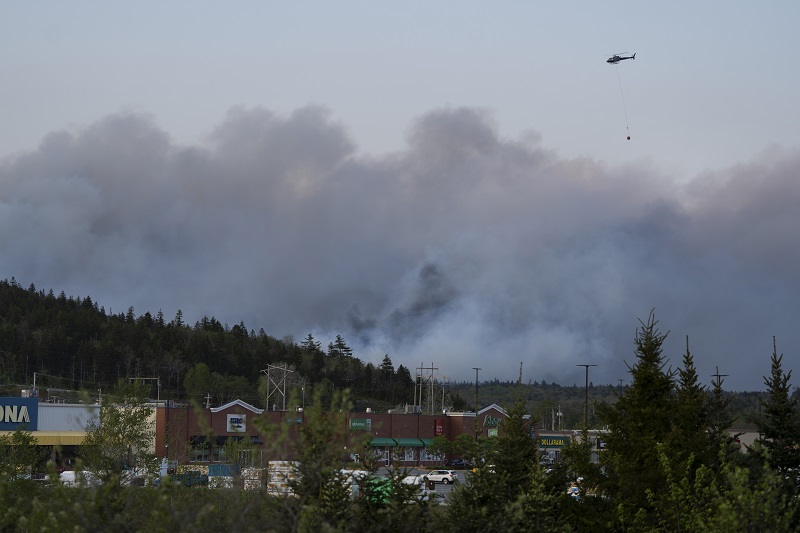What the Nova Scotia wildfire cost the P&C industry

Nova Scotia’s Tantallon wildfire is estimated to have caused more than $165 million in insured damage, according to initial estimates from Catastrophe Indices and Quantification Inc. (CatIQ).
Nearly 90% of all claims related to the Nova Scotia wildfire were personal property claims, CatIQ reports.
The Tantallon wildfire, which lasted from May 28 to June 4, 2023, forced more than 16,000 people to evacuate their homes, and thousands more were left without power. Officials have since confirmed that the wildfire either destroyed or damaged at least 200 properties, including 151 homes.
DBRS Morningstar predicted in June that wildfire losses — at that time estimated to be between $65 million and $200 million — would “remain within the financial absorption capacity of most Canadian P&C insurers.”
Although Canadian P&C insurers’ results are “likely to come under pressure during 2023 Q2 and Q3, as they bear the weight of an above-average wildfire season, we expect that insured losses will remain manageable for most companies,” said Marcos Alvarez, global head of insurance at DBRS. “However, we anticipate that the increase in extreme weather and natural catastrophe losses, together with a hard reinsurance market globally and relatively high inflation levels, will continue to pressure home insurance prices up in the near term.”
The most-damaging Canadian wildfire remains the 2016 wildfire in Fort McMurray, Alta., costing Canadian P&C insurers more than $4.3 billion (2021 figures). Public Safety Canada estimated more than 2,400 homes and businesses burned down in the Fort McMurray wildfire, plus 530 additional structures.
The number and intensity of the wildfires this season suggests an elevated chance of fires reaching urban areas, Glenn McGillivray, managing director of the Institute for Catastrophic Loss Reduction (ICLR), told Canadian Underwriter Wednesday.
“The 2023 wildfire season didn’t really get an early start as some have suggested — wildfires in early May are par for the course in Canada,” McGillivray said. “What isn’t all that common is the number of fires, including large fires, the intensity, and the very active season in the east.
“Many of these fires have remained in wildlands, with some being quite far north and left to burn. But we have had fire enter communities, like with the outskirts of Halifax. We have had fire get into some First Nations-Metis communities as well, and we have dodged several other bullets. But it is early in the season. We could very well get fire straight through to the Autumn, with some fires burning into 2024. We have surpassed the modern record in area burned, so if things keep up, we will have one for the record books for sure.
“Whether we have more and larger interface fires this year is anyone’s guess, but more fire means more can get ‘into town.’”
McGillivary said the season might prompt dialogue about forming a “Canadian wildfire building code.”
Related: What it’s like on the scene of the Nova Scotia wildfires
Reporting on the Halifax wildfire, CBC said Tuesday that Nova Scotia is spending $7.4 million to buy 25 fully furnished modular homes to make them available to rent for people whose homes were destroyed by the Shelburne County and Halifax-area wildfires.
The province said the units — which include both two- and three-bedroom options — will be in line with average market rates. Rent will be around $1,000 to $2,000 a month, depending on each individual’s personal circumstances and location, the province said.
Minister of Municipal Affairs and Housing John Lohr said the government is hoping the units will be in place by September.
Meanwhile, the Insurance Bureau of Canada (IBC) continues to provide insurance information to affected residents. IBC deployed its Community Assistance Mobile Pavilion (CAMP) to talk to consumers about their situation on May 29, 2023.
Gloria Haydock, IBC’s manager of consumer and industry relations for the Atlantic, who was available at CAMP, listed the Top 5 questions insurers received from residents affected by the wildfires:
My home has been destroyed. What happens now?
Will my insurance pay for a place to stay and the items that my family needs right now?
How do I start the claims process?
Will my spoiled food be covered?
What can I expect in the coming days, weeks and months?
Feature image: A helicopter carrying water flies over heavy smoke from an out-of-control fire in a suburban community outside of Halifax that spread quickly, engulfing multiple homes and forcing the evacuation of local residents on Sunday May 28, 2023. THE CANADIAN PRESS/Darren Calabrese







